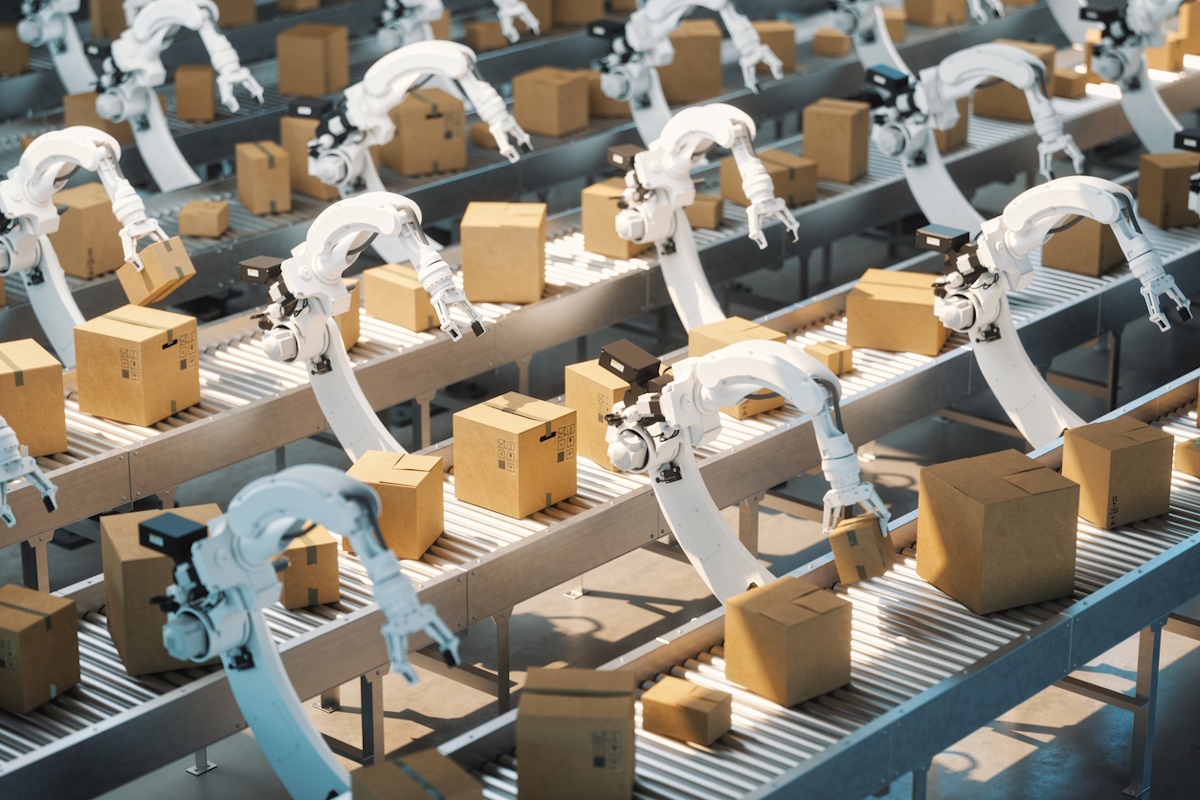Automating the supply chain

Faki Saadi at SOTI explains why automation is key to transforming UK supply chains
Supply shortages, demand fluctuations and logistical delays have rarely been out of mainstream news. With increasing consumer demands and operational challenges, traditional operating models are struggling to maintain pace in a complex and fragile market.
Whether it is high wages, energy costs or expensive property, UK businesses are feeling the pressure to innovate and harness digital solutions to keep a competitive edge. In this new era of technology, it is important to understand the role that automation can play in improving the future of the UK’s supply chains.
High operating costs
Running a business in the UK comes at a cost. With increases to both the national living and minimum wage, immense pressure on local manufacturing and retail businesses begin to grow. This is amplified amid a cost-of-living crisis when it seems everything is going up in price – whether that is commercial rent, energy bills or other resources. These challenges often have a domino effect, impeding future growth of organisations and forcing them to operate from less central locations. On top of this, it creates additional transportation costs and difficulties in recruiting staff.
These high operating costs increase the likelihood of supply chain disruption. For example, the rising cost of fuel has naturally increased delivery costs for businesses, pushing them to pass that increase onto the customer or seek more cost-effective (but often less reliable) delivery partners, resulting in delays and shortages.
According to SOTI’s recent retail report, supply chain issues make it more difficult for consumers to shop, with 92% of UK consumers confirming they have experienced availability, pricing and shipping issues in 2022. Moreover, 37% of consumers said that if delivery or pick-up of an item is more than two days, they will look elsewhere.
Enter, automation
Leading the redesign of operating models in supply chains are automated workflows, with mobile devices in the UK for driving efficiency and improving workers’ productivity. In fact, over one-third (36%) of UK businesses reported substantial growth in the number of devices being deployed across their organisations in the last year.
The level of mobility and automation offered by efficiently managed mobile devices enhances transparency across the supply chain. This provides real-time analytics on business-critical devices and supporting organization’s operations. Increased visibility into key information such as package tracking, product inventory levels and logistics monitoring ensures that the right item is available in the right location, at the right time.
The implementation of automated workflows can be both an opportunity and a challenge for organisations, as these solutions require a complete overhaul of traditional manual operating models. But when done correctly, organisations will experience a significant increase in efficiency.
In addition to forecasting, demand planning and sourcing, automated workflows can integrate with other systems including inventory management and logistics systems. This enables businesses to receive real-time data and visibility on stock levels at a store or warehouse.
By gaining greater visibility, businesses can identify and address bottlenecks in the supply chain, allowing for continuous improvement and optimisation.
Reduce errors and waste with automated operations
While a supply chain automation solution can now manage a complete order lifecycle, it can also greatly reduce human errors during the processing of orders. Since these functions are digitised, businesses will have more time to focus on strategic aspects to help further improve output and operations.
Automation is an essential part of the modern supply chain management system because it provides enhanced insights into business operations. Furthermore, when combined with advanced machine learning algorithms, organisations can utilise built-in analytics programmes to better understand its operations and make informed decisions on future growth opportunities.
This is because it allows businesses to identify known risks as well as help predict future risks by spotting patterns throughout the supply chain. By analysing customer data, these analytics programmes can help a business better predict future demand.
Today’s future: the age of automation
While UK supply chains are challenged by high operating costs and ongoing disruption, there are opportunities to optimise operations and thrive in the current environment. To stay one step ahead of competitors, businesses must be willing to continually adapt and address consumer pain points to drive revenue.
By embracing technology and collaborating with partners, they have every chance to build resilient supply chains that can withstand the test of time.
Faki Saadi is Director of Sales, France, UK and Ireland at SOTI
Main image courtesy of iStockPhoto.com

Business Reporter Team
Most Viewed
23-29 Hendon Lane, London, N3 1RT
23-29 Hendon Lane, London, N3 1RT
020 8349 4363
© 2024, Lyonsdown Limited. Business Reporter® is a registered trademark of Lyonsdown Ltd. VAT registration number: 830519543





